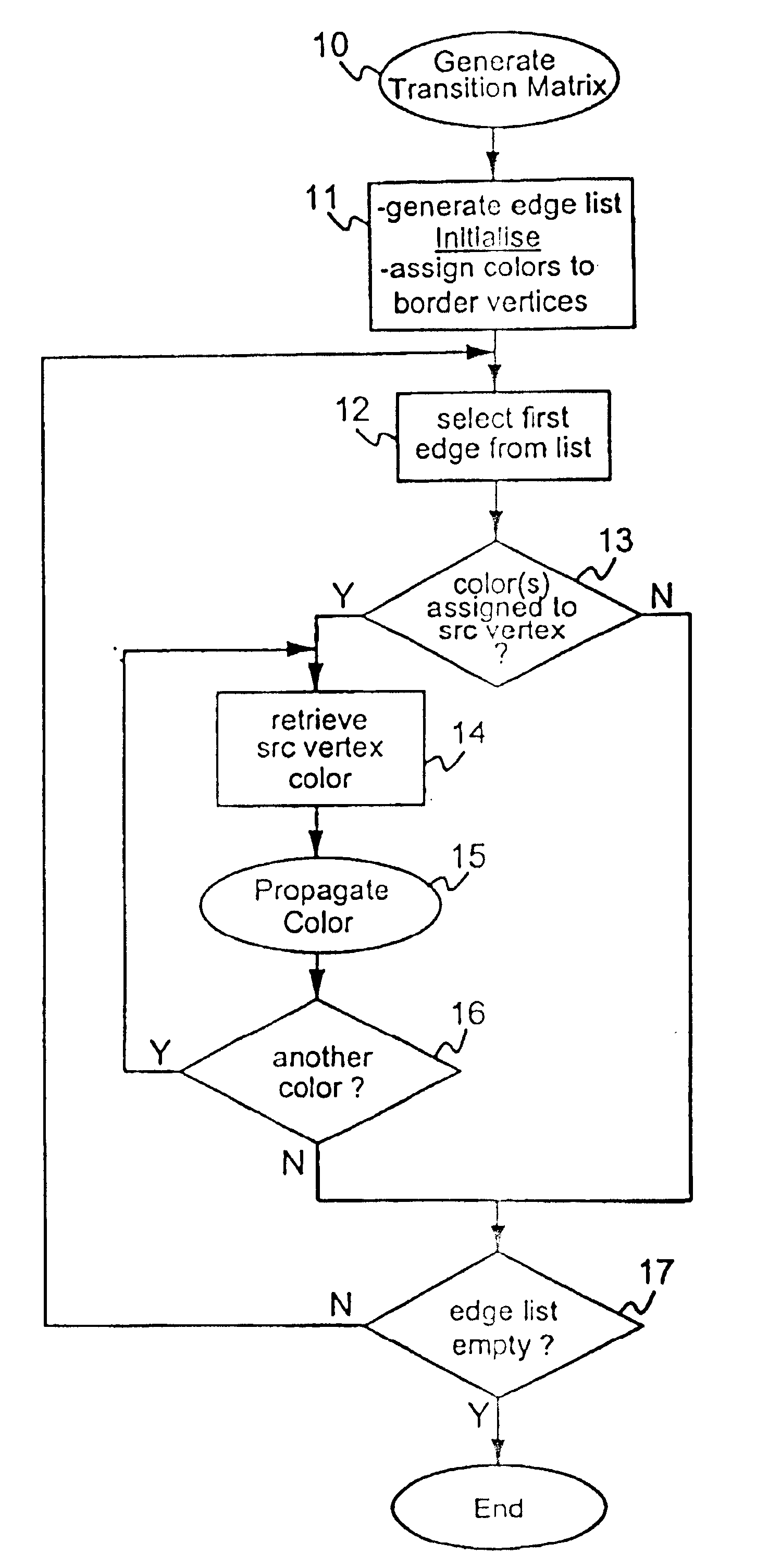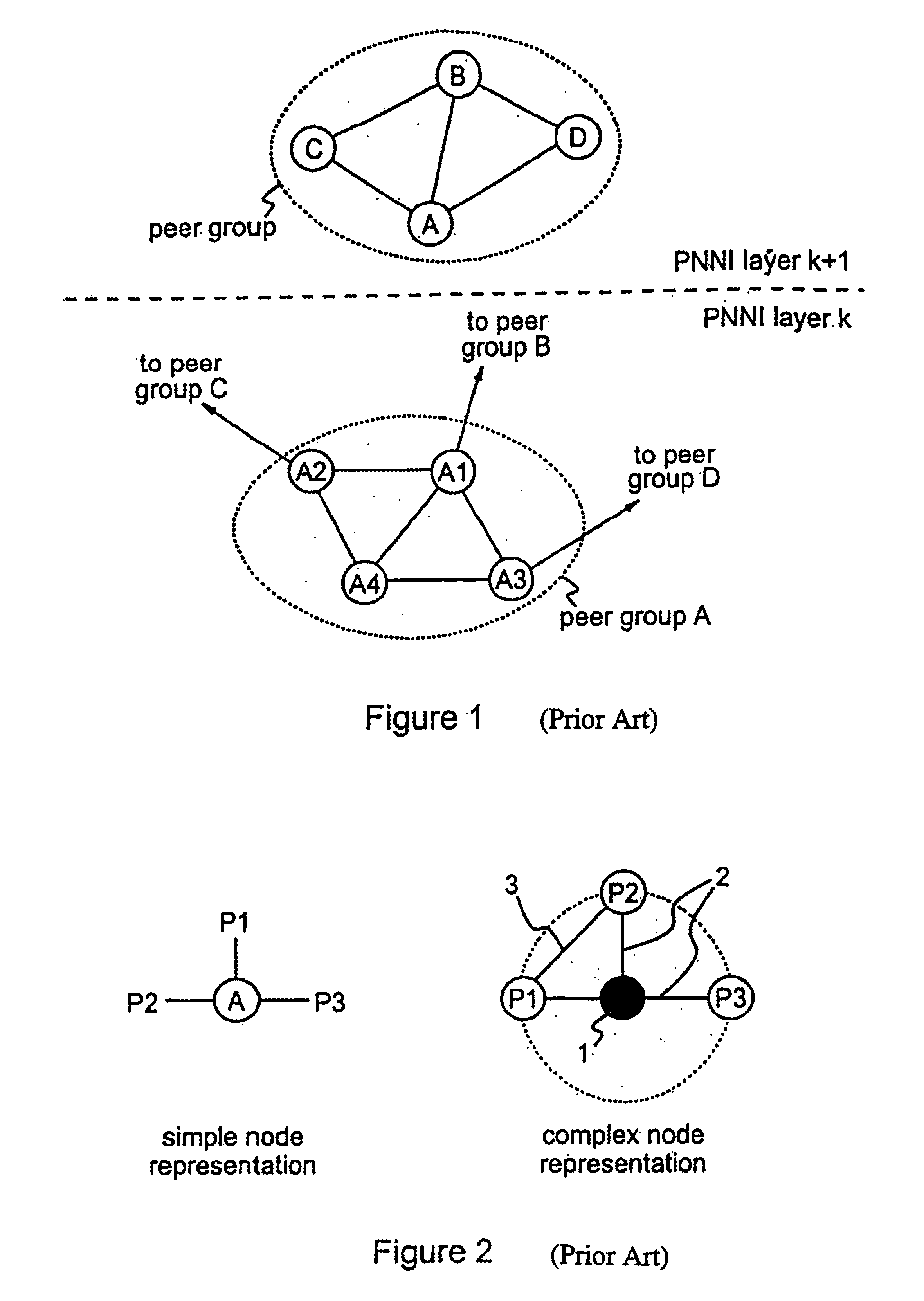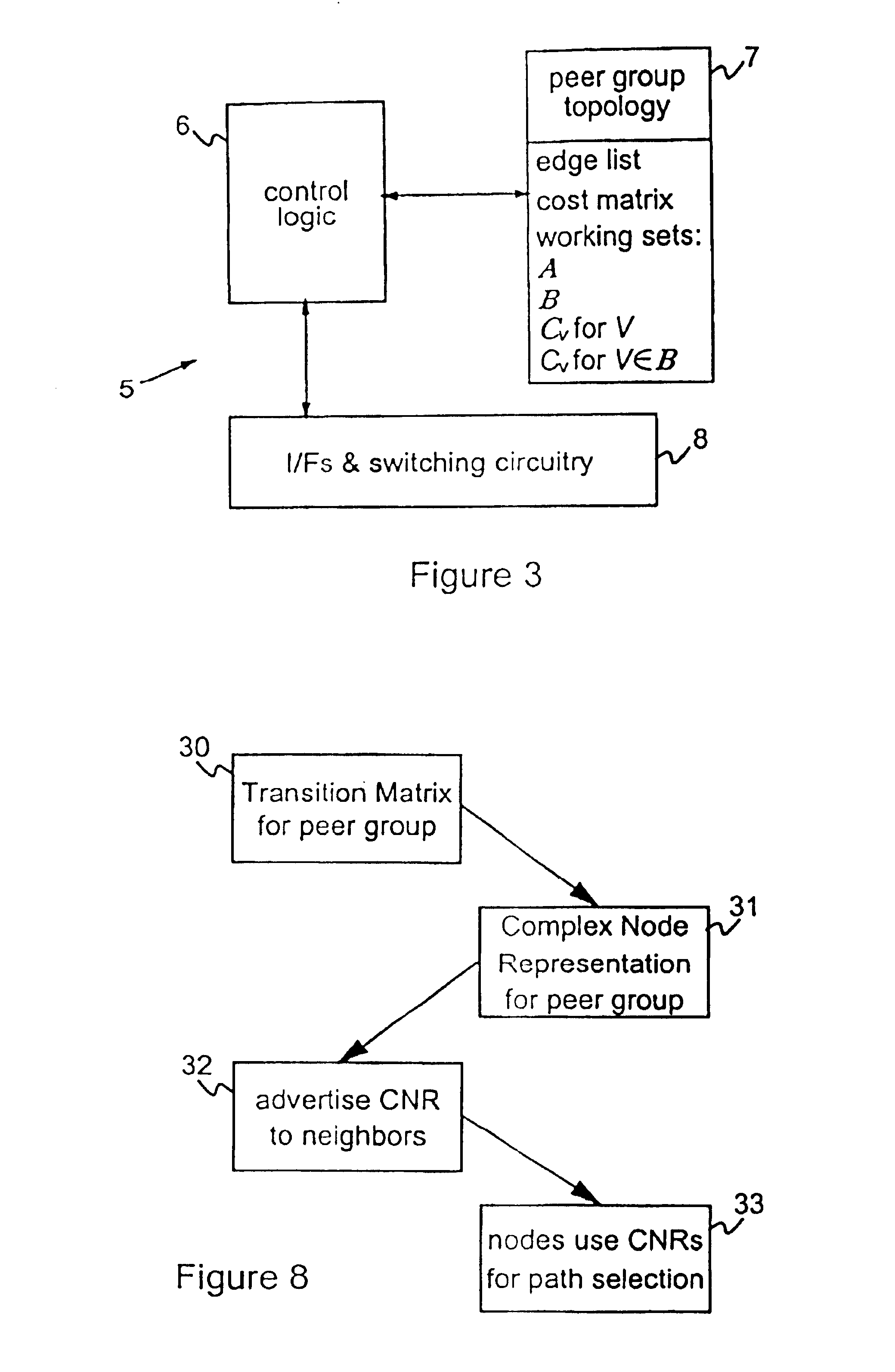Restrictive costs in network systems
a network system and cost technology, applied in the field of restrictive costs in network systems, can solve the problems of individual links in a network having associated costs, restricting costs, and unable to provide detailed information about the topology of a given network to the other networks,
- Summary
- Abstract
- Description
- Claims
- Application Information
AI Technical Summary
Benefits of technology
Problems solved by technology
Method used
Image
Examples
Embodiment Construction
[0044]In the following, an embodiment of the method for generating a set of restrictive costs will be described for the case where the method is applied to generate the restrictive cost matrix, or “transition matrix”, for a PNNI peer group. Before describing the transition matrix generation process, it is useful first to consider PNNI networks in more detail.
[0045]PNNI (Private Network-to-Network Interface) is a hierarchical, dynamic link-state routing protocol defined by the ATM (Asynchronous Transfer Mode) Forum for use in ATM networks. The hierarchy extension and the use of a single routing protocol at all levels of the hierarchy allow the support for large-scale ATM networks. Among the major characteristics of the protocol are signaling for switched virtual circuits (SVCs), dynamic routing capabilities, and support for quality of service (QoS) parameters. As already mentioned, a key feature of the protocol is the ability to cluster network nodes into manageable groups called “pe...
PUM
 Login to View More
Login to View More Abstract
Description
Claims
Application Information
 Login to View More
Login to View More - R&D
- Intellectual Property
- Life Sciences
- Materials
- Tech Scout
- Unparalleled Data Quality
- Higher Quality Content
- 60% Fewer Hallucinations
Browse by: Latest US Patents, China's latest patents, Technical Efficacy Thesaurus, Application Domain, Technology Topic, Popular Technical Reports.
© 2025 PatSnap. All rights reserved.Legal|Privacy policy|Modern Slavery Act Transparency Statement|Sitemap|About US| Contact US: help@patsnap.com



